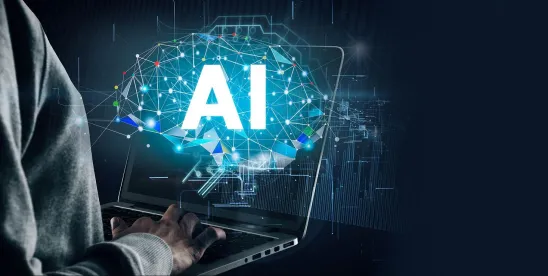On January 23, 2025, President Donald Trump issued an executive order aimed at reinforcing American leadership in artificial intelligence (AI) by eliminating regulatory barriers and revoking prior policies perceived as restrictive. This order follows an initial January 20, 2025, executive action that rescinded more than 50 prior executive orders, including Executive Order 14110 (2023), which established a framework for the responsible development and use of AI. Wilson Elser covered the prior Executive Order in our January 22, 2025, Insight.
The January 23, 2025, Executive Order adopts the definition of “artificial intelligence” from 15 U.S.C. 9401(3), which provides as follows:
The term "artificial intelligence" means a machine-based system that can, for a given set of human-defined objectives, make predictions, recommendations, or decisions influencing real or virtual environments. Artificial intelligence systems use machine- and human-based inputs to:
A. Perceive real and virtual environments
B. Abstract such perceptions into models through analysis in an automated manner
C. Use model inference to formulate options for information or action.
The adoption of the definition is significant, given that many definitions of artificial intelligence exist and a definition gives clarity to which systems are encompassed.
Parameters of the New Executive Order
The new executive order prioritizes AI systems free from ideological bias, emphasizing economic competitiveness, national security, and human flourishing. It mandates the creation of an AI Action Plan within 180 days, led by top White House advisers, and the immediate review of prior AI regulations to ensure alignment with the new strategy. Additionally, the Office of Management and Budget will revise key memoranda to reflect this policy shift.
The revocation of Executive Order 14110 signals a shift away from prior AI governance principles, which emphasized safety, privacy, and international collaboration, toward a deregulatory approach focused on innovation and economic growth. The move aligns with the 2024 Republican Party platform, which criticized regulatory constraints on AI and advocated for a development model rooted in free speech and human flourishing. Notably, CEOs of major tech companies, including Amazon, Meta, Google, and Tesla, attended the recent inauguration, suggesting industry interest in the administration’s AI policy direction.
With the administration signaling that these revocations are only the beginning of broader regulatory reforms, it remains to be seen how future federal actions will shape AI governance in 2025 and beyond.
The DeepSeek Effect
Coinciding with the administration’s strides in revising U.S. AI governance policy, a major shake-up in the AI landscape occurred this week when DeepSeek, a Chinese startup, unveiled an advanced AI model on January 20, leading to a significant market downturn, with U.S chipmakers including Nvidia suffering market losses. DeepSeek’s cost-efficient approach to building large language models has raised concerns about the demand for high-end AI chips and the power required for AI-centric data centers. The revelation challenges existing investment assumptions in AI infrastructure, with DeepSeek claiming it developed its model for under $6 million.
Industry experts suggested that this development could disrupt the dominance of U.S. firms such as OpenAI, forcing them to adopt similar cost-cutting strategies. Experts also commented that greater AI efficiency could lead to even more widespread adoption. Analysts predict a potential shift in AI investment strategies, with capital moving away from a chip-heavy infrastructure toward AI applications and services. Geopolitical implications also are at play, with venture capitalist Marc Andreessen calling DeepSeek’s R1 model “AI’s Sputnik Moment.”
The U.S. Response
The U.S. response to DeepSeek’s emergence has been swift. President Trump’s newly announced “Stargate” initiative revealed on January 21, 2025, aims to counter China’s AI advances by investing up to $500 billion in AI infrastructure. Meanwhile, export controls on Nvidia chips remain a contentious issue, with speculation that DeepSeek may have acquired advanced AI hardware through third-party sources.
A Global Response
Italy’s Data Protection Authority has urgently ordered a restriction on DeepSeek’s processing of Italian users’ data, citing unsatisfactory responses from the Chinese companies behind the chatbot. DeepSeek has gained millions of downloads globally but claimed they do not operate in Italy and are not subject to European data laws, a stance the regulator rejected. An investigation has been opened.
Italy is not the only country that is concerned about DeepSeek. News outlets have reported that the Data Protection Commissions from Ireland, South Korea, Australia, and France have made requests to DeepSeek about its data practices. This raises the question, will the United States do the same as part of its strategy to ensure U.S. primacy in AI development.? On a related note, what will the United States do to protect its citizens on a national level with respect to the privacy of their data?
Summary
The competition between the United States and China now extends to global AI investments, particularly in the Middle East and Asia, where both nations seek partners to build energy-intensive AI data centers. Some analysts argue that cooperation on AI governance still may be possible, drawing parallels to past U.S.-China agreements on nuclear safety.
While DeepSeek’s breakthrough introduces volatility in AI markets, and resulted in a swift action from the Italian regulator, it also accelerates the AI technology worldwide and is likely to spur further regulatory response from the Trump Administration. The United States at a national level has not enacted any comprehensive data privacy laws, though there have been several proposals. State governments – 19 of which have enacted data privacy laws – may also uncover any perceived holes in privacy protection. Thus, it remains to be seen what will be considered in 2025.




 />i
/>i

